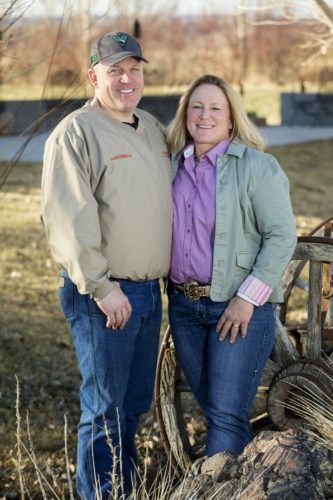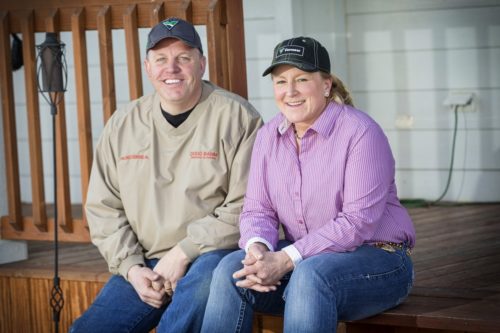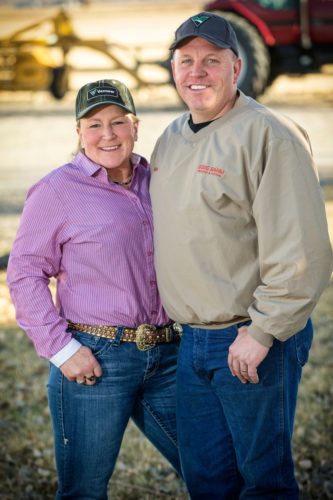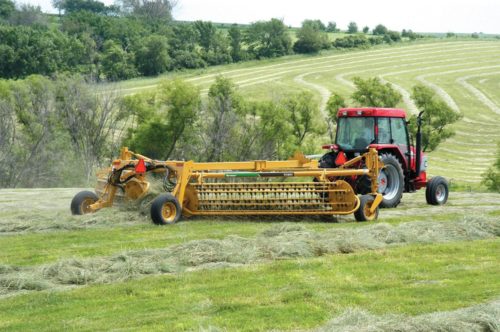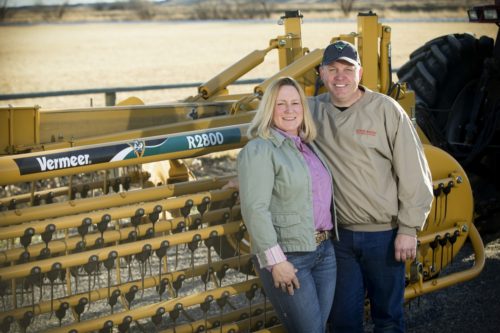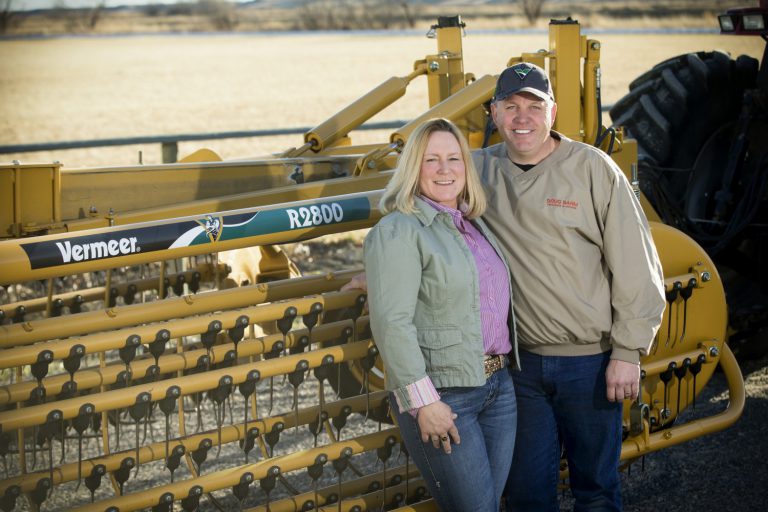
Those Who Hay Together, Stay Together
June 2015
Doug and Trudy Bahm consider the Vermeer R2800 twin basket rake to be the headline feature of their custom baling operation.
When Trudy first met Doug, she was a paramedic from Roanoke, VA. She had never driven a tractor, let alone a semitrailer. The thought of marrying a country boy had never crossed her mind, not really anyway. Then, of course, she met Doug.
Fast-forward 15 years. Today, Doug and Trudy Bahm run a husband-and-wife custom baling operation in the summer and a trucking business in the winter. Trudy is no tag along, either. She’s behind the wheel of the tractor kicking up dust and putting up hay.
During an average season in Hardin, Mont., the Bahms will cover 3,000 acres of hay and between 2,800 and 3,500 acres of straw, putting up a grand total of 29,000 bales by the end of the season.
Trudy typically operates the Vermeer R2800 twin basket rake they use for their operation. Most of the time she will go out to the field in the morning and prepare windrows for baling, and in the afternoon both she and Doug will bale until the sun goes down. Trudy explained that in the early days of their operation, they faced several challenges when it came to making adjustments to their rakes.
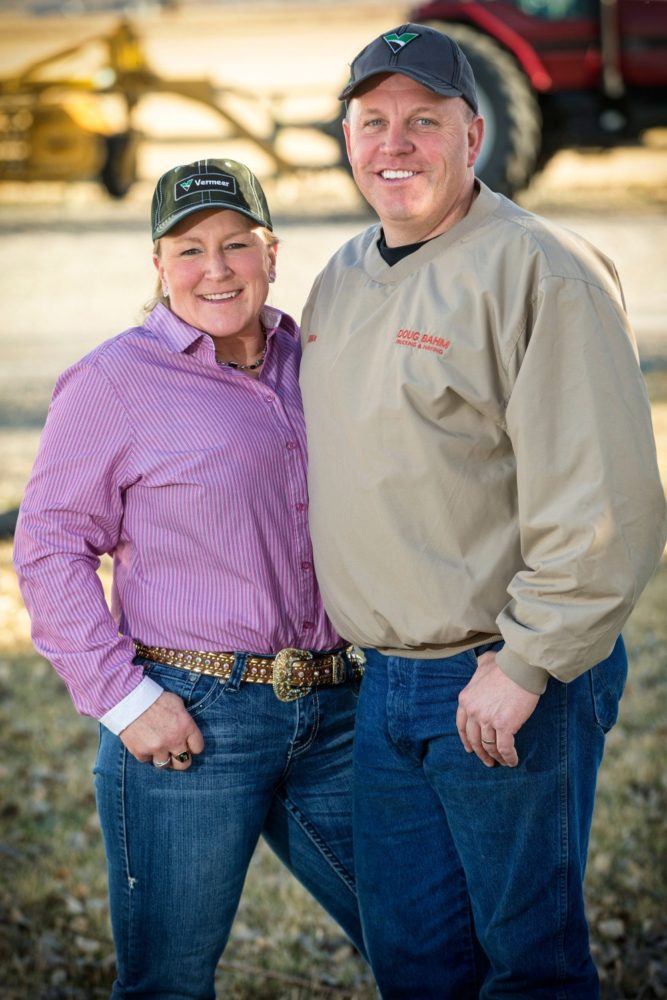
“First you would have to get out of the tractor, unfold it, get it on the right level ground, then you’d have to lock it in. Then if the windrow changed you’d have to change it again,” Trudy said. “It was hard and cumbersome all the time. The biggest thing about it was that you always had to have it level to get it unhooked or you had to lift it to get it adjusted.”
Trudy knows that in a custom baling operation, time is money. She explained that when it’s time to bale and they’re behind on acres, both she and Doug will pull into a field to start raking and baling. And if that field isn’t ready, they’ll move on to the next.
Before acquiring an R2800 rake, this was much easier said than done. By Trudy’s estimates, it would take her approximately 20 minutes to fold the old rake back up after finally getting it adjusted and trying the first field. Factor in travel time to the next location (and the fact that some of their customers are up to 60 miles apart), and she’ll tell you that switching fields was a time-consuming task.
However, the ability to hydraulically control functions on the R2800 now makes it possible for Trudy to move from one field to another with greater speed and efficiency.
“With the R2800, the rake’s folded back up and you’re ready to move in less than two minutes,” she said. “It’s so much easier to do it all from the cab. It takes the manual labor out of it because every single adjustment is made from the cab. Now I don’t get out of the tractor nearly as much.”
Trudy said she appreciates not having to leave the tractor to adjust windrows either. Changing rake and windrow widths hydraulically makes it simple for her to custom-shape the windrows for Doug to pick up in the baler.
“When we’re baling, if we run into really thin hay, we can adjust the windrow and pile it up a little more right from the cab,” she explained. “When I run into really thick hay, Iwiden it directly from the cab and that cuts the drying time in half.
“It’s much better to do it all hydraulically,” she continued. “Windrow presentation is what makes your baler work optimally. That’s why we like the R2800 – with the amount of product it rolls to the center and the way it fluffs for the baler, it feeds the baler uniformly. A uniform feeding baler is what’s going to put out a tight bale of hay.”
"With the R2800, the rake's folded back up and you're ready to move in less than two minutes."
In southern Montana, most of the Bahm’s customers grow their crops on irrigated ground. Oftentimes, Trudy finds herself raking thick, heavy hay, and she’s been pleased with how the R2800 handles these crop conditions. Compared to a traditional wheel rake, Trudy said the R2800 fluffs and rolls the hay in a better manner and even seems to clean the field better.
“Out here we have sandy, dry soil so there’s a lot of sprinkler fields,” Trudy explained. “A lot of the hay up here is grown on land with pivot, flood or wheel-line irrigation systems. The twin basket rakes work much better on an irrigated operation where you have really heavy, heavy windrows and smaller fields. When you’re a custom hayer and you’re running from a four acre field to a 180 acre field and then jumping to a 20 acre field, the twin basket rakes work a lot better.
“For the overall durability of the rake, we’ve done probably over 27,000 acres since we’ve owned it, and we’ve put two new wheels on the front tires and that’s it,” she said. “That’s pretty substantial in the rake industry because normally you’ve welded it and put new bars in it and you’ve done a lot to it.”
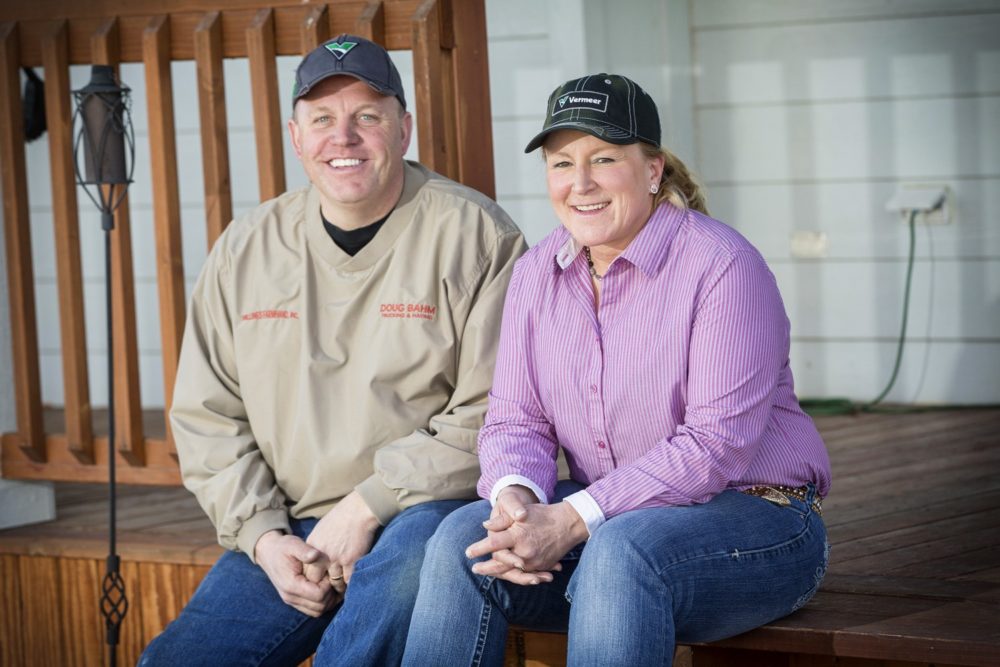
Trudy mentioned she had reservations about the R2800 at first but now she admits it’s been worth the investment.
“Doug always told me, ‘I’m going to get you a big rake.’ Well, we went and looked at the R2800, and I said ‘Oh, gosh, that is just too big. I’m going to have to take the whole field to turn around with that thing.’ And he said, ‘Oh, no, you won’t. You’ll like it.’ And I said, ‘I don’t want that, it’s just too big.’”
Doug didn’t listen.
“He bought it anyway,” Trudy related. “We had it in the field a week, and I fell in love with it. Now I tell people, ‘your wife would love it if you bought this rake. It will be the best present you ever bought her. Instead of diamonds, get her a big yellow rake.’”

